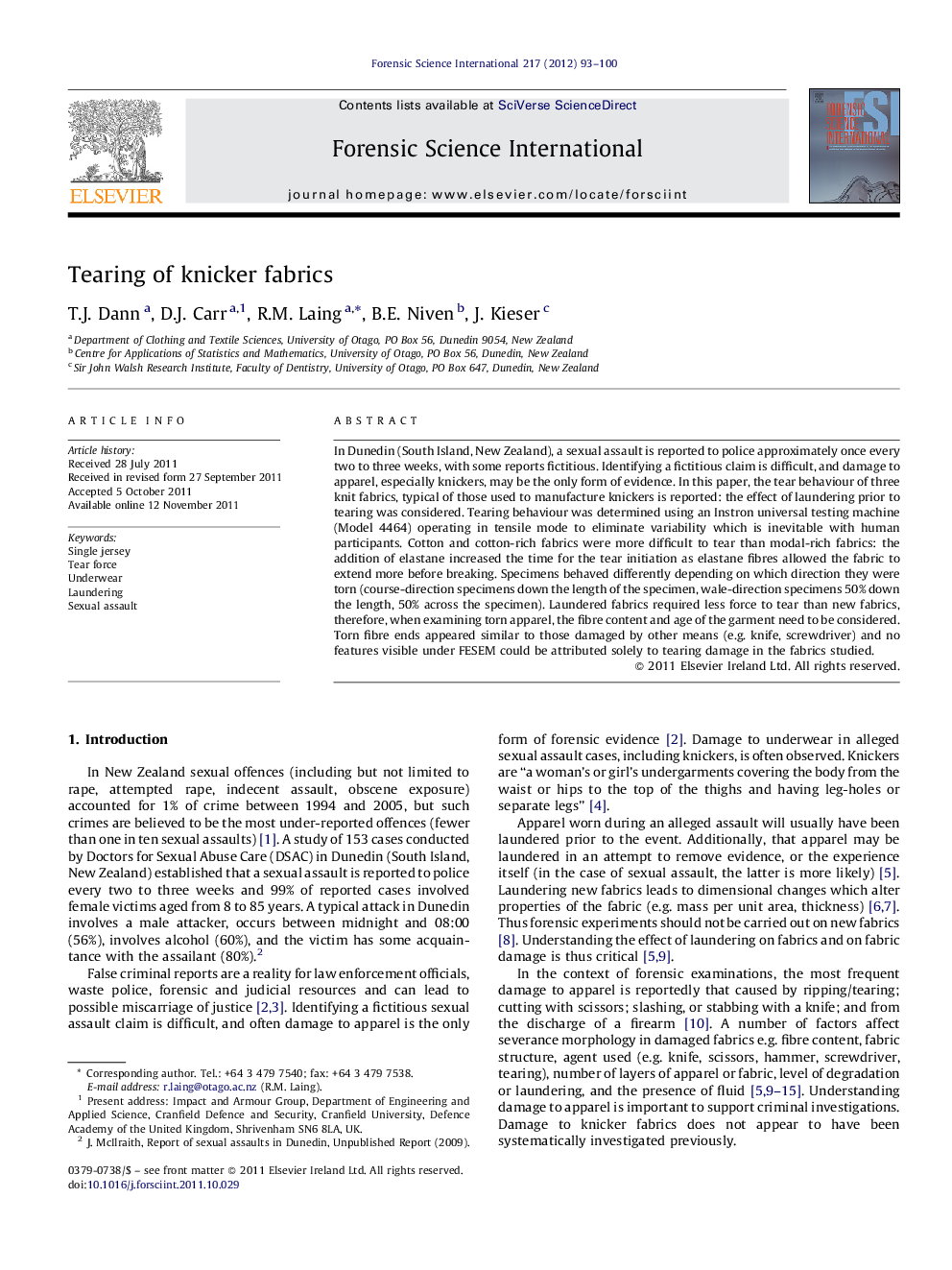| Article ID | Journal | Published Year | Pages | File Type |
|---|---|---|---|---|
| 96249 | Forensic Science International | 2012 | 8 Pages |
In Dunedin (South Island, New Zealand), a sexual assault is reported to police approximately once every two to three weeks, with some reports fictitious. Identifying a fictitious claim is difficult, and damage to apparel, especially knickers, may be the only form of evidence. In this paper, the tear behaviour of three knit fabrics, typical of those used to manufacture knickers is reported: the effect of laundering prior to tearing was considered. Tearing behaviour was determined using an Instron universal testing machine (Model 4464) operating in tensile mode to eliminate variability which is inevitable with human participants. Cotton and cotton-rich fabrics were more difficult to tear than modal-rich fabrics: the addition of elastane increased the time for the tear initiation as elastane fibres allowed the fabric to extend more before breaking. Specimens behaved differently depending on which direction they were torn (course-direction specimens down the length of the specimen, wale-direction specimens 50% down the length, 50% across the specimen). Laundered fabrics required less force to tear than new fabrics, therefore, when examining torn apparel, the fibre content and age of the garment need to be considered. Torn fibre ends appeared similar to those damaged by other means (e.g. knife, screwdriver) and no features visible under FESEM could be attributed solely to tearing damage in the fabrics studied.
